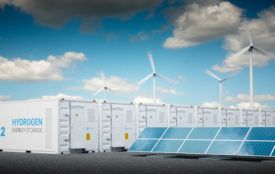A concept for a heating transition free of hardship
Differentiated climate money for buildings can defuse the controversial issue of “climate protection in the boiler room”. MCC now provides a scientific basis for this.
A poorly insulated house with an oil heating system – this is the exemplary case that policymakers are struggling with these days. How can they protect people with such climate-unfriendly living spaces from being overburdened? They plan to make fossil heating more expensive via carbon pricing to accelerate the switch to heat pumps, for example, but they are deterred by the enormous heterogeneity of the building stock. A study now shows how the carbon price in the buildings sector can be fully offset, even in hardship cases. The study was conducted by the Berlin-based climate research institute MCC (Mercator Research Institute on Global Commons and Climate Change) and is available online, including an abstract for political discourse.
“With the scientific concept presented here, we are moving away from our previous recommendation, which was to compensate the population for carbon pricing through uniform per-capita climate money while addressing hardship cases separately,” says Matthias Kalkuhl, Co-Chair of MCC and lead author of the study. “Climate protection in the boiler room is proving to be so politically fraught that compensation for hardship cases must in fact be the starting point. A heating transition free of hardship is feasible: sharply rising carbon prices offset across the board, in terms of the financial burden, while still setting the right incentive – to convert old oil and gas heating systems at the most cost-effective date.”
The policy proposal envisages that, for rented accommodation, the landlord bears the carbon price costs for heating oil or natural gas, for example, and does not include them in the utility bills. To compensate homeowners, including both landlords and owner-occupants, there is a special climate money allocation for buildings. To ensure that no one loses out, this payment is based on living space, independently of income, but scaled to building characteristics. To this end, buildings are divided into categories based on CO2 emissions per square metre (according to fuel consumption or the energy performance certificate rating) and by characteristics relevant for optimal retrofit timing – this could include the type and age of the heating system, class of radiators and the building design (according to the property tax record and heating information from Germany’s chimney sweeps).
The carbon price revenues are recorded separately for each group and distributed in full as differentiated “climate money for buildings” within the respective group. Of course, owners only have to pay the carbon price until they convert to CO2-free heating, but they continue receiving the redistributed money until the last building in the group has been converted. The financial resources for the reimbursement thus decrease, providing a signal for individuals that the optimal time for retrofitting has arrived. Until then, the heating transition does not place a significant burden on the building’s owner, and steering via the groups ensures that the conversion also makes economic sense. Nevertheless, to make it affordable for everyone, accompanying investment support is indicated. It must then be financed from tax revenues. A lot of money is already flowing here: for 2024, the German government has provided around 17 billion euros for retrofitting programmes for buildings.
“Due to the strong incentive effect of high carbon prices, this support could then be provided with significantly lower subsidy rates than today,” explains MCC Co-Chair Kalkuhl. “According to model calculations, an ideal policy mix offsetting the unevenly distributed additional costs resulting from climate policy would indicate a carbon price of around 230 euros in 2030, and government funding of 17 percent of private investment in fossil-free heating, on average, to achieve EU climate targets. The funding could be implemented without red tape by simply reducing the power tax on heat pump electricity and the value added tax on the heat pumps themselves.”
- The scientific paper: Kalkuhl, M., Kellner, M., Kögel, N., Stern, L., 2024, Pareto-improving climate policy with heterogeneous abatement costs in the building sector, CEPA Discussion Paper
https://doi.org/10.25932/publishup-66606 - The resulting abstract on the climate money for buildings (German): Kalkuhl, M., Kellner, M., Rütten, K., Flinner, S., Schenk, A., Edenhofer, O., 2024, CO2-Bepreisung im Gebäudesektor. Gezielte Entlastung durch ein Gebäudeklimageld schaffen, MCC Klimapolitik aktuell
https://www.mcc-berlin.net/Publications/2024_MCC_CO2-Bepreisung im Gebäudesektor.pdf








